In a recent review paper on the practice of conservation agriculture (i.e., minimum mechanical soil disturbance, organic soil cover, and crop species diversification) by smallholders, the authors concluded that it was an approach that could improve soil health, decrease costs of production and increase crop profitability. The present paper outlines the development of a form of conservation agriculture suited to rice-based cropping in small farms of the Eastern Gangetic Plain with particular reference to Bangladesh.
Agriculture in Bangladesh is facing the ongoing challenge of increasing food security for its growing population (currently 164 million people and expected to reach 205 million by 2050 and improving overall land-use sustainability, while decreasing crop production costs to increase farm profitability.
In a recent review paper on the practice of Conservation Agriculture (CA) (i.e., minimum mechanical soil disturbance, organic soil cover, and crop species diversification) by smallholders, the authors concluded that it was an approach that could improve soil health, decrease costs of production and increase crop profitability. The present paper outlines the development of a form of CA suited to rice-based cropping in small farms of the Eastern Gangetic Plain (EGP) with particular reference to Bangladesh.
The nationwide spread of mechanized tillage with two-wheel tractors (2WT), and the development over the past decade of a range of minimum soil disturbance planters for 2WT, provide a platform for implementing CA principles that will decrease costs of crop production (less fuel consumption and decreased labor requirements) and improve the fertility of soils in Bangladesh.
Evaluation of the Versatile Multi-crop Planter (VMP) showed promising results for the establishment and yield of a range of crops in rainfed cropping systems. This novel, lightweight, low-cost planter is now being manufactured in Bangladesh. This paper reviews the systematic work completed on the implications of CA adoption in rice-based systems and on the acceleration of adoption of planters for crop establishment on farms.
The development of CA in Bangladesh, incorporating the new planters, through ongoing research and development demonstrated that crop yields were at least maintained using CA approaches. Effective strategies were developed and evaluated for the engagement of service providers, extension, machinery manufacturers, and farmers in the implementation of a form of CA suited to the cropping areas of Bangladesh.
The research discussed here, conducted during 2008–2018, was focused on target areas to provide a range of soils and cropping systems for the evaluation of CA in Rajshahi, Mymensingh, Rajbari, and Thakurgoan Districts in Bangladesh. The research reviewed was mostly conducted by a Conservation Agriculture project supported by the Australian Centre for International Agricultural Research (2012–2017).
In each of the study areas, cropping systems experiments were established to evaluate the most suitable minimum soil disturbance options and the key limitations to CA and its profitability when applied to rice-based cropping.
Experiments were conducted mostly on farms involving farmers’ groups and machinery contractors (called local service providers (LSP)), where monsoon (kharif-2 season) rainfed rice (aman rice), cool-dry season high yield irrigated rice (boro rice) ,and other non-rice crops in the dry (rabi) season, e.g., oilseed, pulse or wheat (Triticum aestivum), and pre-monsoon season (Kharif 1) crops, such as aus rice, mung bean (Vigna radiata) or jute (Corchorus capsularis L.), were established, depending on their local suitability.
These experiments were supplemented by research and development focused on improvements in minimum soil disturbance machinery, starting with the VMP design, field experiments designed for the diagnosis of agronomic constraints in CA related to weeds and nutrition, and studies on improvements in soil fertility associated with minimum soil disturbance, increased retention of crop residues and more diverse crop rotations including pulses and oilseeds.
Research and development in Bangladesh have developed effective CA practices for smallholder farms in the EGP using minimum soil disturbing implements mounted on 2WTs. The key outcomes are new knowledge developed on:
(i) effective strip planting using the VMP;
(ii) planting machinery development and performance testing in the small fields using 2WTs;
(iii) agronomy for mechanized seeding with minimum soil disturbance and residue retention;
(iv) weed dynamics and weed management under CA;
(v) crop rotation effects on soils and weeds;
(vi) mechanized transplanting of NPT rice;
(vii) soil improvement under CA;
(viii) decreased greenhouse gas emissions under CA;
(ix) increased profit from CA-based SP + NPT rice in farmers’ fields;
(x) water balance, which showed that wheat under CA (SP and increased residue retained) required 11–33% less irrigation water than the convention practices; and
(xi) commercialization models for sales of planters to LSP.
Based on the evidence presented, there should now be sufficient confidence for more widespread demonstrations across different agro-ecosystems in the EIP and for programs to engage the private sector and farmers in the adoption and out-scaling of CA for smallholder rice-based crop production in the EGP.
Read the study:
Bell RW, Haque ME, Jahiruddin M, Rahman MM, Begum M, Miah MAM, Islam MA, Hossen MA, Salahin N, Zahan T, Hossain MM, Alam MK, Mahmud MNH. (2019) Conservation Agriculture for Rice-Based Intensive Cropping by Smallholders in the Eastern Gangetic Plain. Agriculture. 9(1):5.
crop establishment, crop residue retention, fuel use, minimal soil disturbance, planter, non-puddled rice transplanting, strip planting

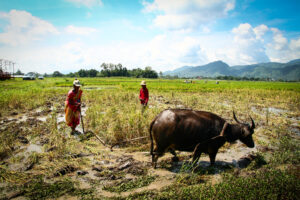

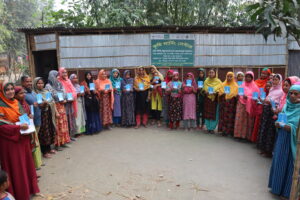
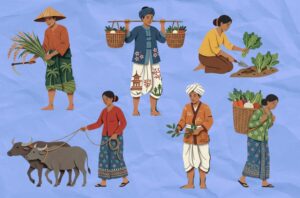
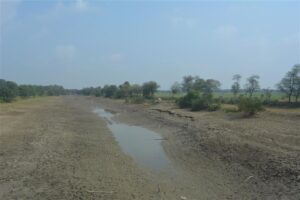
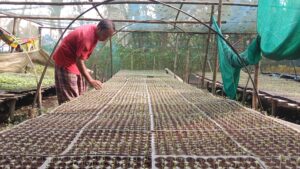
just now seeing this . interesting but it still does not broach the elephant in the room that most S Asia and maybe SE Asia CA researchers have avoided how CA does or does not fit into rice based systems monsoonal. Yes 2WT VMP strip till, 4WT tine, and happy seeders can and do well in the other than rice categories and Indian farmers have enthusiastically embraced ZT winter-dry season wheat etc in India but after years of no-till rice research researchers current main recommendations for adoption in India and Nepal for monsoon rain fed rice is non-puddled full shallow tillage with single pass followed by direct seeding rice with drill. It has problems but there are areas under adoption. And there is evidence that this method also bringing some soil benefits. Some programs in India and this one by ACIAR program in Bangladesh work on reduced till and ZT rice with rice transplanters but after almost 2 decades after their introduction their transplanters numbers/sales are still very small still. In India area reported by FAO as CA area (after they give the FAO definition to CA) is 2.4 million. Most area of the “FAO CA” is in rice base systems which is definitely not FAO CA but could be reduced till, non-puddled rice. Much more discussion and much more research obviously needed.